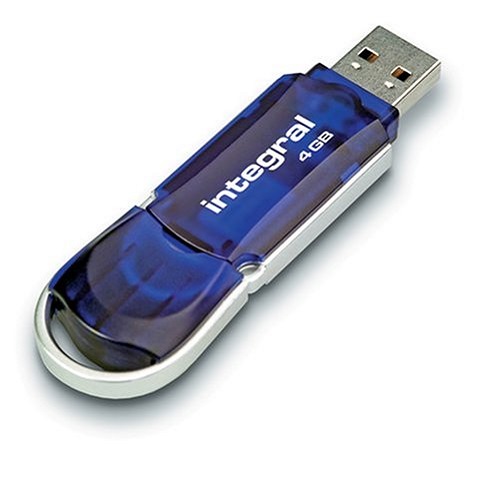A flash drive and a pen drive have similar capabilities and are fundamentally alike; in any case, many individuals confound the terms. Conversationally, individuals may allude to a flash drive and pen drive as though they are the same. This is because of the way that all pen drives are in fact flash drives. That being stated, it is imperative to note that flash drives have uses that stretch out past the abilities of pen drives.
What is Flash drive?
A USB flash drive or a USB memory or is a memory device that has flash memory. A USB flash drive uses a USB interface for communication with a computer that is very practical because it does not require any additional drivers for operation. The USB flash drive consists of a small printed board with flash memory, enclosed in a plastic or metal case. The flash drive is only active when it is plugged into a USB port that provides power to it. Which means that this is a memory device used for storing and transmitting data through USB (universal serial bus) interfaces. Flash memory indicates that the data on the device is stored or deleted electrically. The development of this type of devices began around 1998, and in 2000, Trek patented a group of devices designed for storing data. In 2001, M-System released the patent of the USB flash drive as well as its patent implementation. The initial data transfer rates were determined by USB0.9, USB1.0 and USB1.1, and their speeds ranged from 0.9Mbps to 12 Mbps. This was not enough for users, so in 2000, USB 2.0 was introduced at a speed of 480Mbps. USB 3.0 was designed in 2008, with a data transfer capability of up to 5 Gbps, while USB 3.1 (year of 2013) is updated to super speed mode of 10 Gbps. As of March 2016, flash drives with anywhere from 8 to 256 GB are often sold, and less frequently 512 GB and 1 TB units.
What is Pen drive?
A small electronic chip which is utilized as a medium of information transfer and storage from one computer to another is called a flash drive, while a pen drive is a small drive which is utilized to exchange information between multiple systems. The pen drive was presented In April 1999 by Amir Ban, Dov Moran and Oron Organ. The name, naturally, came from its pen look-alike. It can be used by any system having and USB port. It is considerably more helpful and gainful than the floppy drive. Any kind of record or information can be effortlessly put on s pen drive. It had also gained an enormous popularity as it provided the opportunity for data backing up. In the beginning it got a stockpiling limit of 8 MB, which is currently updated up to 1 TB by January 2013. Overall, pen drive is by and large just utilized as a portable USB storage tool, while a flash drive has a wide range of services for data storage.
Difference Between Flash drive and Pen drive
1. Definition of Flash drive and Pen drive
Flash drive is a non-volatile memory with no mechanical elements, in form of a chip. Pen drive is a removable drive consisting of a flash memory that is connected via USB port.
2. Usage of Flash drive and Pen drive
Pen drive is only used for data storage/transfer, while flash drive can be used for various purposes – both internally and externally of a device.
3. Connection of Flash drive and Pen drive
A pen drive is always directly connected into a USB port. A flash drive, on the other hand, may be plugged in a direct or corded USB connection, or even more can be stored inside of a cell phone or mobile media device.
Flash drive vs. Pen drive: Comparison Table
| Flash drive | Pen drive |
| Small usb drive used for data storage/transfer, using an USB interface | Pen-like portable drive consisting of a flash drive |
| Designed by M systems in 1999, and little bit later more refined version by IBM was developed | Phison in 2001 |
| Various uses | Mobile usb storage tool |
Summary of difference Between Flash drive and Pen drive
USB flash drives are small scale hard drives that are interfaced with a computer by utilising a USB port. Normally, the limit with respect to a flash drive is between 8 GB to 256 GB (less frequently to 1 TB size). The bigger drives ought to give enough storing ability for the user to back up large quantities of data. These drives are relatively cheap (considering they’re reusable), compact, durable, simple to utilise, both PC and Mac compatible, and don’t require any additional software. The term flash drive covers a broad scope of concepts – integrates every USB memory or memory device that has flash memory and has various practical uses.
Pen drive, on the other hand, is a type of flash drive. This is probably the most usual USB flash drive (because it looks like a pen, at least by the way it is opened) with a certain capacity, and has a slot for a certain type of memory card, so it can be also used for capacity expansion, and for card reading at the same time. It can be used by any system having and USB port.
- Difference Between Thermodynamics and Kinetics - June 24, 2018
- Difference Between Welding and Soldering - June 24, 2018
- Difference Between Additive Colors and Subtractive Colors - June 20, 2018


This is very informative and interesting post.
Reply